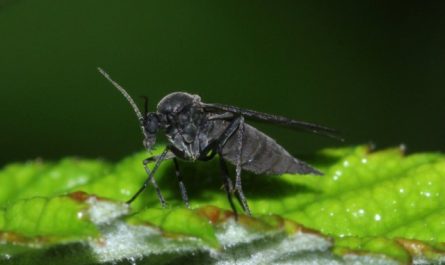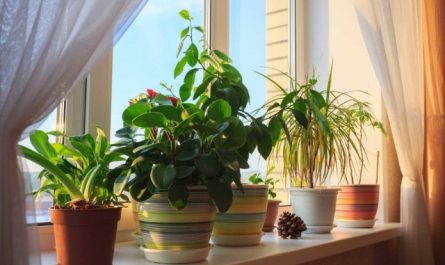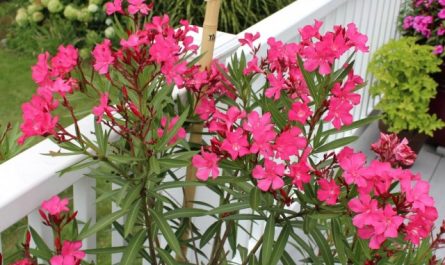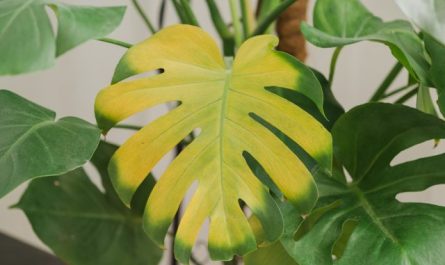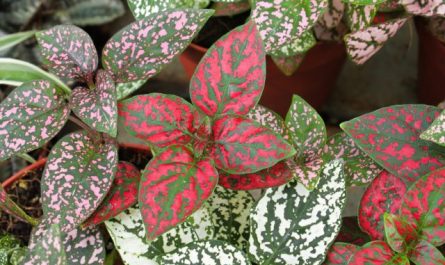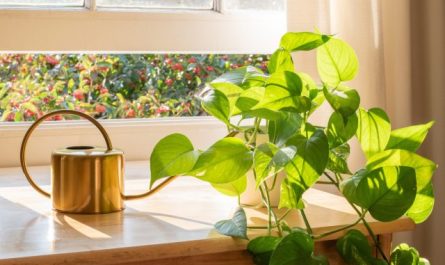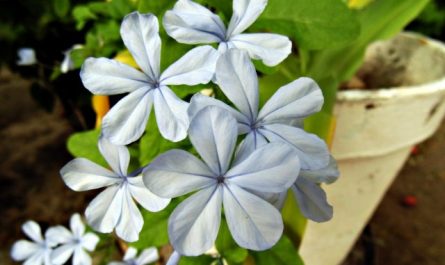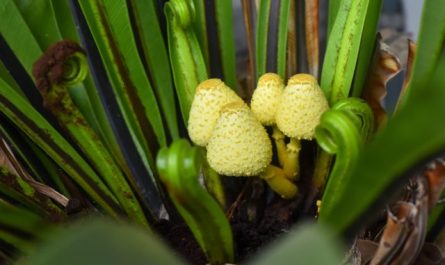Among the indoor plants that can boast bright and variegated foliage, alpinia claims to be not only the rarest, but also the most original culture. It simultaneously reminds of bamboos and calatheas-marantas, and sometimes even of vrieseas. However, it resembles the latter only in its inflorescences. Luxurious leaves, most often covered with variegated contrasting stripes, look so modern that it is impossible not to admire the beauty of their impeccable patterns and shine.

This unusual plant, first of all, is a medicinal plant, requires a lot of space and does not tolerate dry air. But its bright appearance and ability to bloom almost without effort and special conditions are worth trying to grow.
Alpinia – indoor transformation of a rare medicinal exotic plant
Alpinia is a genus of amazing medicinal plants. They even got their name in honor of the legendary Italian physician and scientist Prospero Alpino, who discovered many rare medicinal species during his travels to tropical countries.
Alpinias are common only in tropical climates, in southeast Asia, but the number of their species is simply astounding. Alpinias are represented by more than two hundred species. This plant is rightfully considered one of the most famous plants of Thailand.
Belongs to representatives of the genus Alpinia (Alpine) to a bright family of herbaceous perennials with very aromatic roots – Ginger (Zingiberaceae). They are also known as galanga, Chinese ginger, ginger herb, and kalanga officinalis.
Alpinias are large, fast-growing (often more shrub-like in appearance) herbaceous perennials. They grow as a thick, dense turf of 10-40 pseudo-stems, fairly straight, strong shoots that never branch.
Somewhat reminiscent of the roots of bearded irises, the tuberous roots of alpinias are powerful, horizontally located, densely branching into segments, up to 2 cm thick, with ringed scars, reddish, with a few adventitious roots.
Alpinia produces new shoots tirelessly, up to 40 stems on one plant. Each segment or branch of the rhizome produces only one shoot.
The leaves of alpinias are large, lanceolate, with a large central vein, often with a narrowed base and an elegant tip. They tightly embrace the stem and are located on the shoots in two rows, strictly alternately.
The basic rich dark green tone is a great rarity among indoor alpinias. After all, they are mainly represented by variegated varieties, the leaves of which are decorated with various light stripes and strokes located diagonally to the central vein, creating the effect of variegated ripples.
All leaves emit a strong aroma when crushed, as do the roots when injured or in contact.

Alpinia blooming
Unlike many exotic plants that bloom extremely rarely indoors and require the creation of certain specific conditions for flowering, alpinias bloom quite willingly and without any special stimuli.
In nature, the flower stalks of alpinias can grow up to 1,5 m. Indoor alpinias are much more modest even in this parameter, but the flower stalks are always approximately twice as long as the leaf shoots. And the length of the inflorescences on them varies from 10 to 30 cm, and the older the plant, the longer and larger the flower stalks.
The apical spikelets, racemes or panicles are never too dense, often drooping under the weight of the flowers. Among alpinias, there are short, dense, upright panicles, in many ways reminiscent of the flowering of bromeliads due to the bright stipules. However, the racemes of most alpinias are more reminiscent of orchids. Regardless of the flowering features, large inflorescences on a plant with such luxurious leaves seem quite exotic.
The flowers of alpinias are asymmetrical, outwardly very reminiscent of shells or peculiar orchids, with a short tube, elliptical cup, short three-lobed corolla and petal lip, usually exceeding the corolla lobes several times in width and pleasantly surprising with bright colors and patterns. White or red bracts are large and bright.
This unique plant blooms, as a rule, only in the summer in indoor culture, but different species can bloom in different months, and the conditions of maintenance often shift the period by several weeks.

Popular types of indoor alpinias
In indoor culture, the most widespread plants in nature and those cultivated in Asia are poorly represented. The calling card of the genus alpinia officinalis (Alpinia officinarum), whose appearance is exemplary due to its large lanceolate sessile leaves and dense apical panicles of inflorescences, is one of the most universal medicinal crops in the arsenal of Eastern medicine.
Having become famous for its use in the treatment of cholera and malaria, it is still used very widely today – from the treatment of digestive problems and diseases of the digestive tract to toothache, headaches and even seasickness.
Basically, the healing properties are characteristic of the roots of the plant, containing unique resins and essential oils of spicy and bright smells, used for flavoring fish, meat dishes and alcoholic beverages. But at home, you should not experiment with collecting them from plants, drying and using them, giving preference to ready-made spices.
There are also more compact and originally flowering relatives among the alpinias.
Alpinia tapenata (Alpinia vittata, an obsolete synonymous name – alpinia Sandera (Alpinia sanderae) is one of the most popular and compact types of alpinia. Even in nature, the maximum height of the plant is limited to 80 cm, but in a room this type of alpinia can be limited to half a meter in size.
The shoots are densely foliated with linear, up to 15 cm long, narrow dark green leaves, on the surface of which white stripes are clearly visible. The apical panicles of inflorescences of bright pink flowers seem dazzling and very dense.
Alpinia cerumbet (alpinia zerumbet) — the most interesting species in terms of the variability of patterns on the leaves. The stems are tall, with lanceolate leaves narrowed at the base and unique long drooping brushes of bell-shaped cream flowers with an original yellow-pink lip. A variety of wide or narrow light yellowish, cream and white stripes are characteristic of all varieties and the basic form of the variegated plant.
Alpinia purpurea (Alpinia purpurata) is a very beautiful and strict species with a symmetrical arrangement of oval-lanceolate leaves, not as narrow as those of other alpinias, reminiscent of ficuses. Unique red bracts around white flowers make narrow panicles of inflorescences very bright.

Rare species of indoor alpinias
Alpinia spurata (Alpinia calcarata, formerly known as Alpinia bracteatum (Alpinia bracteata) is an original species, whose shoots can grow up to a meter in height, with long-petiolate, lanceolate leaves up to 50 cm in length, the color of which becomes lighter closer to the edges of the leaf blades.
This species of alpinia produces orchid-like flowers in drooping long racemes of inflorescences. Green, dry and brittle bracts emphasize the beauty of the unique flower with a light beige corolla and a red and yellow lip.
Alpinia Kawakami (Alpinia kawakamii, synonymous name – Alpinia Elveza (Alpinia elwesii) is an original species with sessile, long, linear leaves. Straight brushes of inflorescences are very wide, consist of dozens of flowers with a long tube, white corolla, eyelashes along the edge of the lobes and an oval large lip with reddish patterns.
Alpinia obtusifolia (Alpinia mutica) is a beautiful species with dark, half-meter, narrow spear-shaped leaves and sparse panicles with original white flowers with a unique wide, spotted yellow-orange-red lip.
The smallest-leaved of all the alpinia species remains Alpinia flavescens (Alpinia luteocarpa), whose stems with narrow, lanceolate, reddening leaves at the edge with a strongly pointed tip resemble the fronds of feathery palms. The dense arrangement of the lobes only emphasizes this effect. The loose brushes of inflorescences with white-red petals of the corolla look very bright.
Growing conditions for indoor alpinias
Alpinia always looks compact and charmingly dense, especially when young bushes of fashionable variegated varieties are displayed on the shelves. But this plant very quickly reveals its true size and genuine character. Large, powerful, fast-growing alpinias, even with appropriate control measures, still remain one of the most aggressively growing plants. Moreover: they love free space and require a very careful selection of the location.
The transformation of alpinia from a small miracle, often treated with inhibitors, into a true giant is a stunning sight. And the larger this plant becomes, the more decorative it is.
Alpinias are more demanding of free space and one single point of care. Otherwise, they pleasantly surprise with their unpretentiousness and ability to adapt to slightly less than ideal conditions. This is a common heat-loving plant, which, by a lucky chance, is used to living in the same temperatures that are typical for ordinary living rooms.

Lighting and placement
Alpinia loves light, but not so much that it would be difficult to find a comfortable place for it in the room. Any placement in a place with good lighting will suit it. Alpinias are good in partial shade and diffused light, but are afraid of direct sunlight.
Even in the spring, in the middle of the day, the variegated leaves of varietal alpinias are best protected from the bright sun by installing diffusing screens. Alpinias feel good not only on window sills, but also near windows, preferring eastern and western windows to southern ones (but in the latter they can be placed a little deeper in the interior).
Alpinia flowering is stimulated by increased lighting. Usually seasonal changes in summer are enough, but moving to brighter places can help to get the plant to produce more flower stalks.
Finding a place for Alpinia where it would be comfortable is not very easy: it loves space, plenty of fresh air and does not tolerate crowding. This beauty will not develop well and will not reveal its true beauty in large groups and in the company of giants. Alpinia is a solitary plant or at least a conditional solitary plant, around which it is worth leaving as much space as its own crown occupies.
Temperature conditions and ventilation
Alpinias’ love of heat can be called legendary. This plant is accustomed to a tropical climate and does not like to spend the winter in the cool. In fact, there is no need to create excellent summer and winter temperature conditions for its maintenance: it is enough to ensure that the alpinias are in a place where the temperature never falls below 20 degrees Celsius in the summer and below 15 degrees in the winter.
Wintering at a temperature of 16 to 18 degrees is desirable, but not mandatory, because alpinias, with proper care, develop normally in normal room temperatures. But it is still worth considering that with very warm wintering, air humidity is a critical parameter and the plant may not withstand its drop.
Alpinias are heat-loving plants. And despite their love for ventilation and fresh air, it is better not to take them out into the garden or onto balconies for a permanent stay, putting them out only on those days when there is no threat of the air temperature falling below the minimum permissible 20 degrees. Cold drafts are unacceptable.

Alpinia care at home
The only thing that alpinias have strict requirements for is high, or better yet, very high air humidity. This plant will not survive in the usual dry air of living rooms, and without additional measures, even with very careful care, it will die. But otherwise, growing it is surprisingly easy.
Watering and air humidity
Alpinias are moisture-loving and in this respect are no different from any other tropical indoor plant. They need abundant watering, which is done quite often in summer and reduced in winter in accordance with the rate of drying of the soil.
Uniform humidity, in which only the top layer of the substrate dries out, is the best option, but alpinias can withstand short droughts and temporary over-watering.
In winter, watering for alpinias is reduced, monitoring the rate of drying of the soil and postponing watering for 1-2 days after the top layer of the substrate dries.
If incorrect watering of alpinia can still be forgiven, then the lack of measures to humidify the air is usually destructive for this crop. Alpinias require the creation of very high air humidity, but, fortunately, do not require the mandatory installation of industrial humidifiers. They can be content with ordinary spraying, provided that these procedures are regular and frequent.
Keeping the leaves clean is the most important point of care. Dust should not accumulate on the luxurious large leaves of alpinias, so hygiene procedures should be at least weekly. The leaves can be wiped with a damp cloth or sponge, but alpinia will not refuse washing. A warm shower stimulates the plant’s growth and makes the colors appear brighter, but this procedure can only be carried out by controlling the water temperature (5-10 degrees above room temperature), doing this in the spring and summer months.
Top dressing and fertilizer composition
Alpinia can produce large leaves with luxurious patterns or classic dark green color only when the soil is fertile. Fertilizing is very important for the plant. But you should not immediately include fertilizing in the care program after the first signs of growth or after transplantation.
Top dressing for alpinias once every 1-2 weeks in a standard concentration is carried out not from March, but from April, ending in October, when daylight hours begin to decrease sharply, and the number of cloudy days completely stops plant growth.
Unlike most indoor crops, alpinias essentially remain garden plants and do not change their habits even in terms of choosing fertilizers. These medicinal crops, like many of their much more frost-resistant colleagues, adore organic fertilizers. The use of preparations based on biohumus or other types of organic fertilizers in alternation with complex preparations with a full composition of macro- and microelements is preferable.
Pruning and shaping indoor alpinias
Despite the status of a beautifully flowering culture, alpinia flowering does not depend on pruning, and shaping for this plant is an extreme measure. The only measure that this plant really needs is cutting off faded shoots.
Rejuvenation is always preferable to pruning, except for removing damaged and dry shoots. The remaining branches should be cut or touched only for their complete removal. Shortening the shoots does not lead to the growth of lateral branches, and the cut shoot gradually dries out.
The most effective way to contain, stimulate and rejuvenate alpinias is considered to be division.

Transplantation, containers and substrate
Alpinias grow quickly, but there is no need to disturb them unnecessarily. These plants prefer to be replanted on demand, which is done when the plant completely fills the container allocated to it in width.
Alpinias are replanted only at the beginning of the active growth stage. Replanting in March is preferable; it should not be postponed until mid-spring.
For alpinia, it is essential to select wide, shallow containers that allow for growth.
Alpinias prefer simple but nutritious soil mixtures. Particular attention should be paid to a coarse, non-compact soil structure that allows powerful roots to develop normally.
Universal substrates for decorative foliage plants or self-composed soils containing turf, humus soil and quartz or coarse sand (and other loosening additives) in approximately equal proportions are suitable for alpinia. The pH reaction must be neutral. Alpinias do not grow very well on peat substrates.
Alpines are transshipped, removing loose soil and old drainage and trying not to damage the adventitious, thin roots extending from the tuberous main roots. The less contact with the roots, the better. If you want to divide, save part of the whole earth ball on each division, cutting or breaking the bush into large pieces. After transplanting, do not fertilize for 3-4 weeks.
Diseases, pests and problems in growing alpinia
Alpinias always very clearly signal about incorrect conditions of maintenance or care. Loss of decorativeness and falling of leaves, depressed condition and gradual dying off of shoots are the main symptoms indicating a violation of the most important point of care for alpinias – measures to maintain high levels of air humidity.
This unique plant with a high content of essential oils in its tissues is resistant to pests and diseases and almost never suffers from problems typical for indoor plants.

Reproduction of Alpinia
This plant not only loves regular rejuvenation (the recommended frequency is every 3 years), but also requires it to maintain its decorative appearance and compactness.
Alpinia is rejuvenated not by re-rooting cuttings, but by simply dividing old bushes into several parts. Division is carried out only in spring, during transplantation, leaving at least 3 segments in the division. After division, alpinias develop very quickly, young bushes produce shoots several times more actively than old ones.
You can grow a replacement for alpinias or expand your collection by growing new bushes from seeds, although it will take many years to reach the true size of the plant. Alpinia seeds can only be used immediately after collection, as they lose their germination capacity very quickly.
Sowing is carried out in light soil, under glass or film. The temperature both before emergence and at the stage of growing plants should not fall below 22 degrees Celsius. Plants are pricked out after the development of the first true leaf, carefully, into low bowls.

